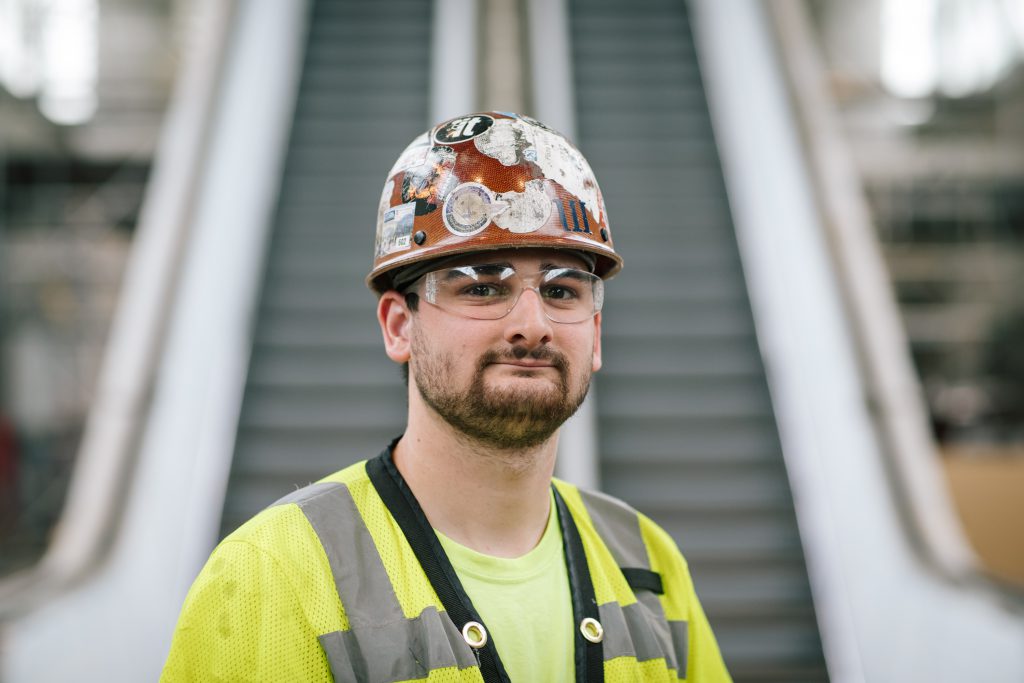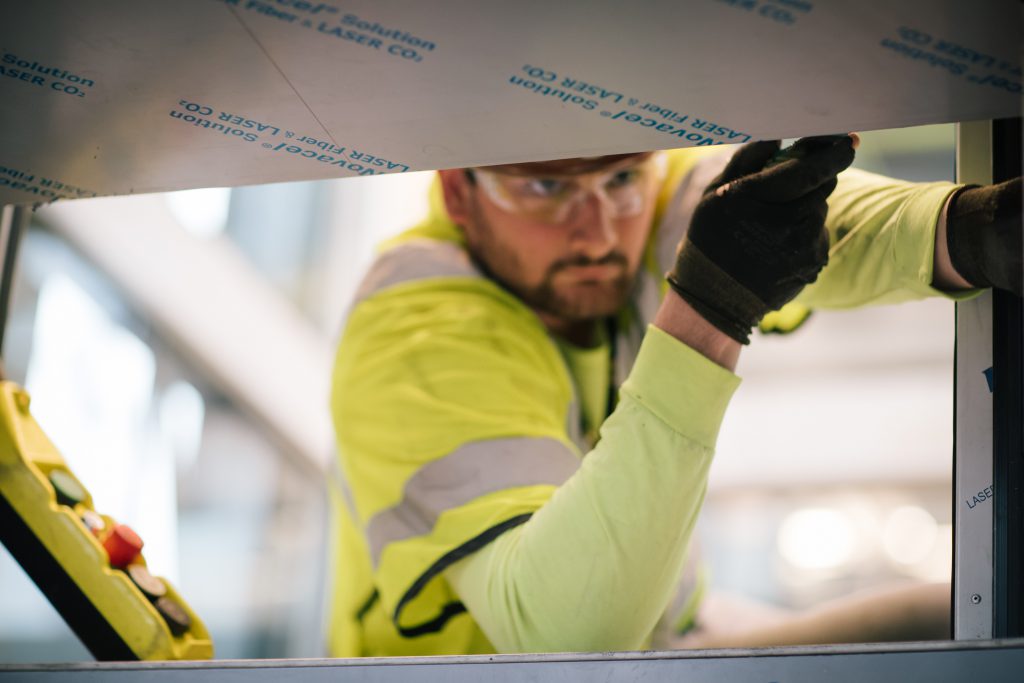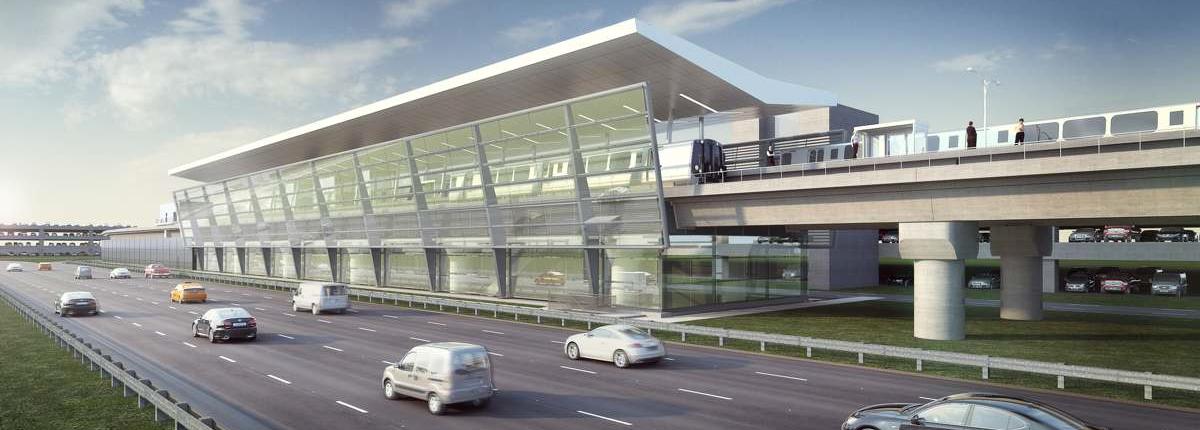
For Owings, Md. native Phillip Ward, 25, fire has been the substance upon which he built his career and a common thread that connects many aspects of his life. As a teen, he volunteered as a firefighter. As an apprentice ironworker with American Ironworks/Continental Construction, he now melts metals as he helps build out the Silver Line Phase 2A. And for his new fiancée, he melts metals in his home forge to make her wedding band in the Japanese Mokume-Gane, or wood-grain metal, style. He’s in the last year of his union’s four-year apprenticeship program, and is proud to already have a monumental project under his belt.
How did you get interested in doing ironwork? I started back in high school. I took two years of welding. I kind of bounced around and tried to find something else I was interested in, but I always kept doing welding on the side. I ended up getting some welding jobs and realized I could make a career out of something I enjoyed and then got a job in the Ironworkers Union [The International Association of Bridge, Structural, Ornamental and Reinforcing Ironworkers] three years ago.
What do you now do on the Silver Line? When I first started, we were doing everything from galvanized guardrails, galvanized stair rails, sinew clips, divider beams. We’ve done heavier miscellaneous beams, which were used for what they call a trolley beam, to hoist heavy equipment into the Metro stations. We’ve done ladders, including pit ladders for elevators.
More structural than decorative work? Initially, but earlier this year I started doing cladding, which is what we call finished ornamental material. Doing stainless cladding on the elevator shafts at several of the stations. Since January, I’ve been doing finished material, whether it be cladding on the elevator shafts or what we call Alucobond panels, which is an aluminum metal and plastic bonded panel that gets painted.

Do you favor structural or ornamental work? I kind of enjoy it all, to be honest.
Is there something you like best about working on the Silver Line? Being on such a historic project. Not only is this the first time merging the Metro system and Dulles International Airport, but this is a project that will be around for a long time. I know all of our work will last a long, long time, and I have confidence in all the other trades have delivered high quality work as well.
To build something that has this much visibility – obviously a lot of attention needs to be paid to quality work and safe work. How would you characterize the emphasis on quality and safety on the Silver Line project? There’s several different QCs [Quality Control] who insure not only that we’re doing the highest quality work, but that everybody is working safely. They ask questions and constantly look out for everybody. If we see an issue, we’re also encouraged to say something. We’re all encouraged to look after each other.
And have there been any personal triumphs? I’m pretty proud of the work I’ve done at Ashburn Station. There were trolley beams – actually the biggest ones on the whole job site. They were right around 52 feet long and around 138 pounds a foot. Those were the biggest beams I’ve ever put up! And normally with something like that, you’ve got a crane to set it. But we were in a precast room where we didn’t have access to a crane, so we had to use different chain falls. It was a real interesting experience, and I was happy to be involved in it and learn from it. I think when it was all said and done between the three beams, it was something like 18,000 pounds!
That’s a lot! Anything worth doing is worth overdoing. Attention to detail. I like to make sure every little detail is perfect and everything is to the highest of standards.
Makes you proud? Definitely! It really didn’t set in, in all honesty, until now that we’re nearing the end. I’m proud to stand back and look at it and be able to say that I worked on a project like this. I’m sure a lot of trades people, or almost anybody in the construction industry, says the same thing about any project. But I feel like this one is different compared to the other ones I’ve been at, just because of the amount of people that will go through these stations. Most job sites that I’ve been on, most people don’t even bat an eye. They just think it’s another construction project. But where I’m at right now, at the Dulles Station, we constantly have passengers going back and forth through the pedestrian tunnel that crosses through the Metro station. Sometimes, we’re working right where people can see us and they come and talk to us. People are constantly stopping and asking questions and are impressed by all the work. That’s when it really set in about how big of a project it is and how many people are actually going to see it.
